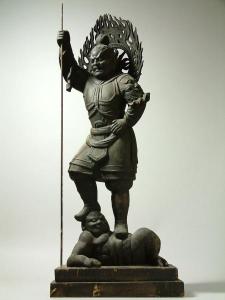From Shiro Kuma's Weblog by kumablog

Distance is power
Bô jutsu is one of the key to enter the kûkan as it gives access to distance. Too often in training we are trapped by the form (waza) and do not dwell enough into the feeling (kankaku). When sensei introduced us to the “cycle of weapons” in 1993, many bujinkan members were surprised as bô jutsu did not seem to be “ninja” enough to them.
But bô jutsu was only an excuse to excel. Bujinkan is footwork. When we train the bô, the technique traps our brain and our movements follow a “1, 2, 3″ sequence. After repeating those forms long enough, something fresh comes out of them. Through mechanical repetition the brain frees itself and a natural movement is created only because footwork adds itself to a new understanding of distance.
In one of the bujinkan schools, it says: “ahead lies paradise” meaning that in a fight you get protected by entering the distance to the opponent. By accepting the encounter, you actually enable yourself to be safe and free in your actions. This knowledge of how to distance yourself correctly is the first thing you learn with the use of long weapons. This freedom has created a kûkan of which you were not aware of before. Through the study of bô jutsu you are now able to enter this kûkan and bring your taijutsu up to a new dimension.
Weapons are our best teachers. We move our bodies and we now learn to do it with an artifical extension offering new possibilities.
Bô jutsu is not “ninja“? maybe not, but our skills improve a lot through this type of study. We understand now distance and angles in a wider sense and can play freely with a new created space.
Maybe this is why divinities are often represented with a long staff. 






…
![]()
 …
…
 …
…